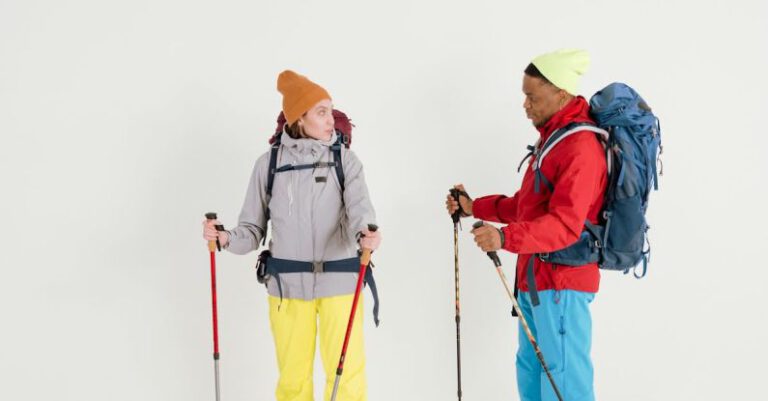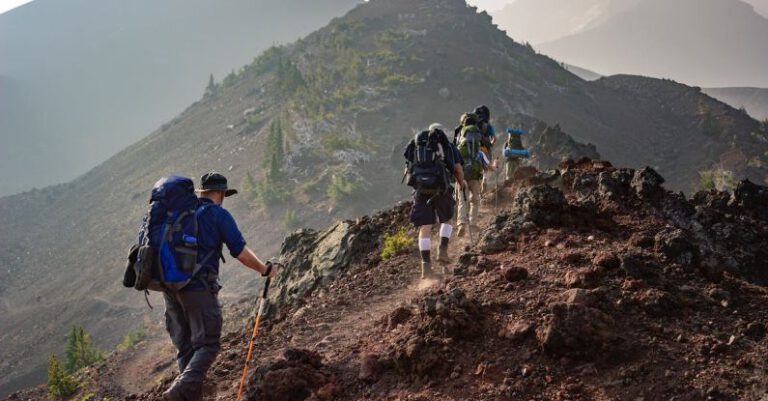What Safety Precautions Are Necessary for Mountain Travel?
Embarking on a mountain journey can be an exhilarating experience, offering breathtaking views and a sense of adventure. However, the rugged terrain and unpredictable weather conditions make mountain travel potentially hazardous. To ensure a safe and enjoyable trip, it is essential to be well-prepared and take necessary safety precautions. In this article, we will explore the key safety measures that are crucial for mountain travel.
**Research and Planning**
Before setting out on a mountain adventure, thorough research and planning are essential. Familiarize yourself with the chosen route, including the terrain, elevation gain, and potential hazards. Check the weather forecast and be prepared for sudden changes in weather conditions. It is also advisable to inform someone of your itinerary and expected return time in case of an emergency.
**Proper Gear and Equipment**
Having the right gear and equipment is crucial for mountain travel. Invest in high-quality hiking boots with good ankle support to prevent injuries on uneven terrain. Dress in layers to regulate body temperature and protect against the elements. Carry a map, compass, and GPS device to navigate accurately. Additionally, pack essentials such as water, food, first-aid kit, headlamp, and emergency shelter.
**Hydration and Nutrition**
Staying hydrated and well-nourished is vital when traveling in the mountains. Dehydration can lead to fatigue, dizziness, and other health issues, so be sure to drink plenty of water throughout your journey. Pack high-energy snacks such as nuts, dried fruits, and granola bars to maintain your energy levels. Avoid consuming too much caffeine or alcohol, as they can contribute to dehydration.
**Acclimatization**
When traveling to high-altitude destinations, acclimatization is crucial to prevent altitude sickness. Ascend gradually to allow your body time to adjust to the reduced oxygen levels at higher altitudes. Stay well-hydrated, avoid overexertion, and listen to your body for any signs of altitude sickness, such as headache, nausea, or dizziness. If symptoms persist, descend to a lower elevation immediately.
**Weather Awareness**
Mountain weather can be unpredictable, with conditions changing rapidly. Keep a close eye on the sky for signs of incoming storms and be prepared to seek shelter if necessary. Avoid exposed ridges and summits during thunderstorms, as they pose a significant risk of lightning strikes. Dress appropriately for the weather and be prepared for sudden temperature drops or precipitation.
**Navigation Skills**
Strong navigation skills are essential for safe mountain travel. Familiarize yourself with map reading, compass use, and GPS navigation before embarking on your journey. Pay attention to landmarks, trail markers, and distinctive features to stay on course. In case of getting lost, stay calm, retrace your steps, and use your navigational tools to find your way back to the trail.
**Emergency Preparedness**
Despite taking all necessary precautions, emergencies can still occur in the mountains. Carry a fully charged cell phone and portable charger for communication in case of an emergency. Know how to signal for help using a whistle, mirror, or flashlight. Familiarize yourself with basic first-aid skills to address minor injuries or illnesses while waiting for help to arrive.
**Conclusion: Safety First in the Mountains**
Mountain travel offers unparalleled beauty and adventure, but it also presents unique challenges and risks. By prioritizing safety and taking necessary precautions, you can mitigate potential hazards and enjoy a safe and memorable journey in the mountains. Remember to research your route, pack essential gear, stay hydrated, acclimatize properly, be weather aware, hone your navigation skills, and prepare for emergencies. With careful planning and vigilance, you can make the most of your mountain travel experience while staying safe and sound.






